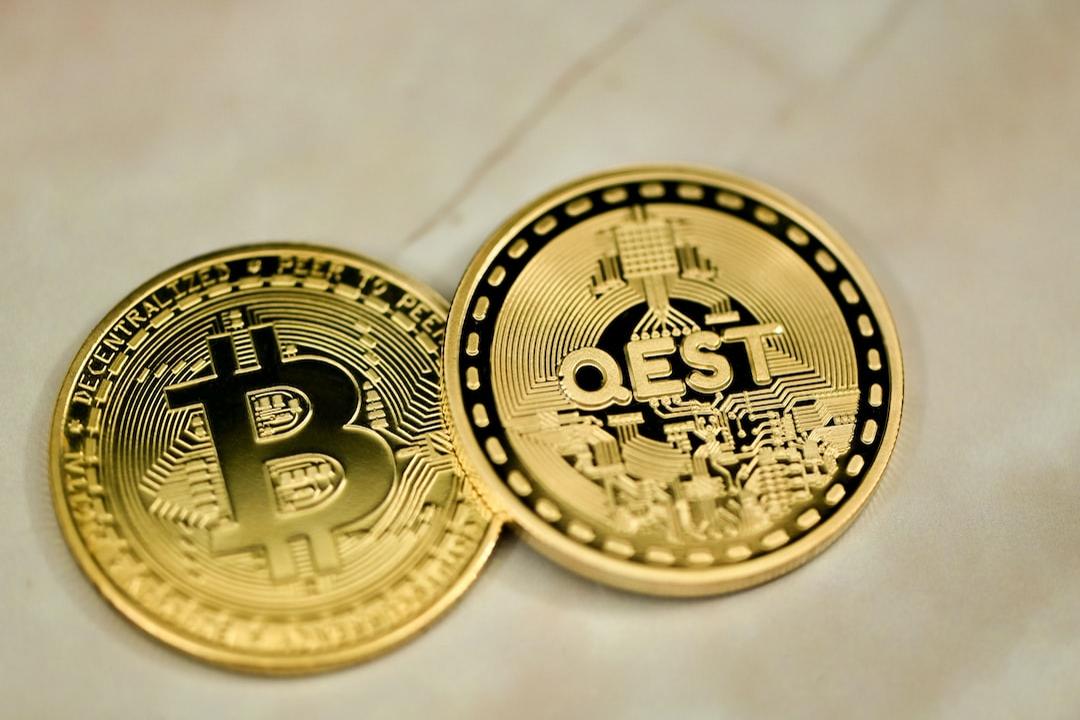It’s an Unlikely Example
Stephen Milan recently stated that he does not advocate this idea. But the fact remains that Trump is challenging the existing international rules and questioning the role of the dollar and U.S. government bonds.
Why? Because he only focuses on the current situation’s impact on U.S. finances. This viewpoint carries the risk of being short-sighted, seeing only the trees and not the forest.
If the U.S. were to default on foreign-held government bonds in a hostile century of bond issuance/swap, this could cause gold prices to rise and the dollar to fall. The impact on the yield curve would be remarkable. Even without such a scenario, official foreign exchange reserves seem to be diversifying further, shifting towards gold, euros, francs, and yen. Furthermore, it is possible that agreements to settle trade in currencies other than the dollar could be reached.
In light of this potential reality, it is no surprise that the amount of U.S. government bonds held by foreign governments has been declining for years:

The U.S. policy is easily viewed by other countries as extortion. This economically marginal policy itself is highly risky. If it fails, it would be akin to the U.S. acting both as a bank and as a client, borrowing from the bank… and then deciding to default on its own.
But the fact remains: countries are still negotiating with someone who is ready to destroy the entire system at any time, regardless of the consequences. It is not hard to see how many countries would rather submit than face a de-globalized world and its challenges.
Would this situation lead to results that would not devastate the global economy? Yes, but there will be no quick restoration of global trust in the U.S.
Regardless of how negotiations progress, it is clear that trade policy will be the main driver of cross-asset returns and economic growth this year. Clearly, we are witnessing a systemic change that will have macroeconomic implications for the coming years.
Under this new system, tariffs are more a precedent than a policy. The U.S. has shown that it will use market access as a regulator, tightening or loosening trade conditions based on geopolitical compliance rather than economic efficiency. Whether the government proposes large tax cuts or other supportive measures, the ultimate outcome will depend on the speed and manner of the U.S.-China trade negotiations.
Nothing is more important than this at the moment. The U.S. and China have rapidly experienced a spiral of retaliations under the Smoot-Hawley Tariff Act, rising as high as 145%.
Therefore, even though the circumstances and environment are completely different, it is not hard to understand how economists and bankers in 1930 felt when they witnessed the outbreak of the Smoot-Hawley Tariff Act trade war. Globalization had become somewhat like economic mutual destruction. There may be “winners.” Perhaps one country is destroyed by 80%, while others are completely obliterated. But is this the world we expect?
Unlike the Hoover administration, the Trump administration faces the contradiction of being both a debtor nation and a trade-restricting nation. While both ignored economists’ warnings and tried to maintain America’s position through tariffs, Hoover’s policy was primarily defensive (and misguided), aimed at protecting U.S. industries, while today’s approach includes additional aggressive factors: deliberately using the U.S.’s status as a debtor nation as leverage to transform the global trade and financial system from a public good into private toll roads.
Although it might be tempting to say, “Well, this situation might replay,” it is problematic to do so.
The return of the tariff state?
We are no longer in the 1890s or the 1930s. The world today is globalized and integrated, never having tried to separate again.
We are not far from an event that will make us deeply aware of how interconnected the world has become. The pandemic has not only caused destruction but also revealed the truth. It has starkly shown us how fragile the global trade framework has become. Shipments halted, semiconductors disappeared, and the illusion of powerful supply chains crumbled.
I think we cannot simply… dismantle supply chains. I also believe the U.S. cannot break free from the just-in-time, local, and almost non-flexible systems designed over decades through tariffs. Trump’s trade policy is not the Smoot-Hawley Act, despite many attempts to compare it.
I believe we cannot easily dismantle supply chains. Nor do I think the U.S. can use tariffs to escape from the systems designed over decades to be just-in-time, local, and nearly inflexible. Regardless of how many people try to compare it to the Smoot-Hawley Tariff Act, Trump’s trade policy is not the Smoot-Hawley Tariff Act.
The most disturbing thing about this situation is the lack of a historical reference frame. You can draw lessons from the 1970s, 1930s, or any other event that reshaped underlying systems, but that doesn’t explain everything.
In the 1930s, the world did not experience de-globalization because globalization was still at a low level. Today, we are witnessing for the first time a superpower actively inserting a stick into its own globalization wheel.
The key is: it might work. Just temporarily and politically, until it fails.
Just like the Smoot-Hawley Tariff Act worked for about three months—until Canada retaliated, Europe raised tariffs again, and global trade fell into a trap. Meanwhile, U.S. farmers went bankrupt in record numbers, yet still voted to support those who were depressing the prices of their agricultural products.
Today’s tariffs are different in form but function in the same way. They are both based on the same belief: that stability can be achieved by dismantling complexity. Unfortunately, complexity does not yield easily.
Frankly: no one truly understands how our complex, ever-changing global system operates in real-time. The U.S. Federal Reserve doesn’t, CEOs don’t, the IMF doesn’t, and of course, neither you nor I do. Its chain reactions are simply unfathomable. However, if we continue down this trend, it seems that our collective awareness of it can only be raised in the most disturbing ways.
This leads to a straightforward question:
In a world where rules may change in the next quarter, how can a company commit to a 30-year, capital-intensive investment?
In an environment where tariffs are not policy but depend on the next tweet, the next election, or the next wave of populism?
This is not just a trade issue; it’s a capital formation issue. Long-term investment is only possible in rare combinations of conditions: predictability and trust in institutions are the two most important factors.
Although the U.S. market has demonstrated extraordinary resilience through world wars, the Great Depression, stagflation, tech bubbles, and bank runs, this resilience is not accidental. It is built on a rare and volatile combination of ingredients that most countries cannot piece together, let alone maintain for decades.
First, global trade. For nearly a century, the U.S. has been the central node in the world’s commercial network—not because it produces the cheapest goods, but because it offers the deepest markets, the most trusted currency, and the widest consumer base. Trade has been the unsung hero of U.S. prosperity, enabling it to import low-cost goods, export high-value services, and convert global surpluses into domestic assets.
Second, political stability. Regardless of how people view the polarization and absurdities of the two-party system, the peaceful transfer of power every four years, and the predictability of contracts, courts, and governance have given capital confidence to stay. Investors may hate regulation, but they hate chaos even more.
Third, a sound legal and regulatory framework. Property rights. Bankruptcy courts. Enforceable contracts. These are the tedious technical structures of capitalism, but without them, capital cannot flow.
Of course, there’s also the dollar. The U.S.’s reserve currency status creates a gravitational field for global capital. Foreign central banks, sovereign wealth funds, multinational corporations: they all hold dollar reserves, settle transactions in dollars, and use dollars to manage risk. This demand lowers U.S. borrowing costs and grants it unparalleled ability to sustain deficits without immediate consequences.
Finally, luck. Two oceans, interwoven rivers and navigable waterways, natural harbors, superior agricultural conditions, a half-century without hostile neighbors, abundant natural resources, a population boom at the most critical times, and an internal market of continental scale. If you were to design a country destined to dominate, America’s map would be the best blueprint. At the very least, it can be said that America is quite fortunate.
This system, seemingly stable on the surface, is in fact intricate and interdependent—this balance is maintained through the inevitability of geopolitics, norms, incentives, and a polite collective illusion that tomorrow will be roughly the same as today. Only large-scale geopolitical events that involve adjustments to the system’s architecture will cause long-term volatility, without “buying the dip”—1971 is a typical example.
Back to the fundamental issue, this question will soon find an answer.
The Cost of Uncertainty
What is the cost of unpredictability? Honestly, I don’t know. I think no one knows. But the system can only withstand so much, and once it’s crossed, it cannot be undone. Perhaps the good news is that the U.S. still has more influence than any other country in the world. However, unless other countries unite, or are willing to endure more pain than the Trump administration anticipated.



